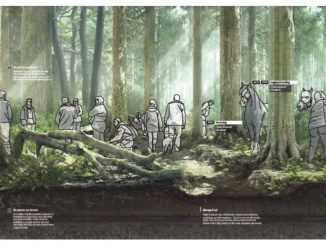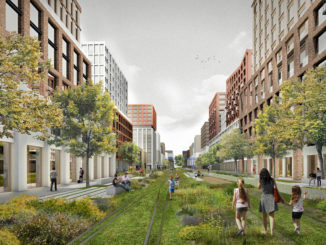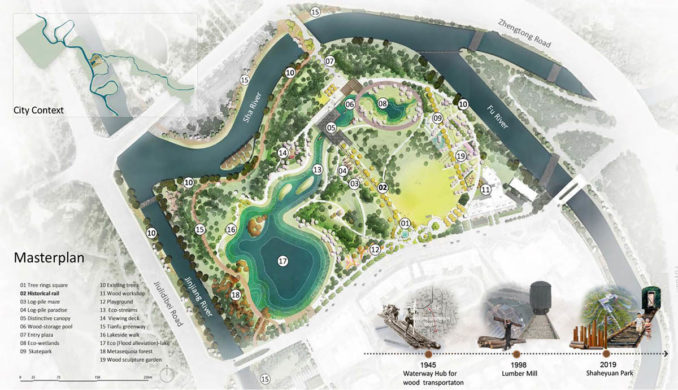
The Shaheyuan Park site was formerly known as the Southwest Lumber Mill, and has historically been a waterway hub for wood transportation in Chengdu. The existing industrial railroad tracks and timber workshops within the site constitute its unique culture and features. On the basis of fully protecting the industrial heritage and historical features of the site, low-impact and low-intervention measures are adopted to optimize the original ecological environment and the park’s design also integrate urban functions that adapt to modern lifestyles.
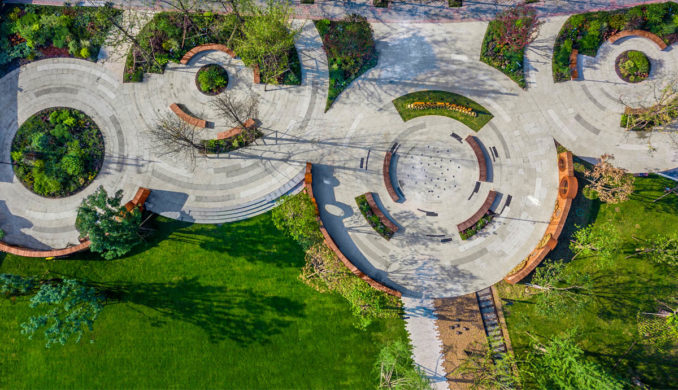
Sustainable Design strategies
Based on the perspective of urban sustainability, the project considers the landscape renewal and functional transformation of the industrial heritage in the new era, and proposes three main landscape regeneration strategies for the Southwest Lumber Mill.
Protection of Wood Cultural Heritage
Awakening of the Historical Memory of the Site
Wood is chosen as an element to witness the development and evolution of the site. Locally sourced from site, lumber is used as a narrative to translate the history and memory of the site.
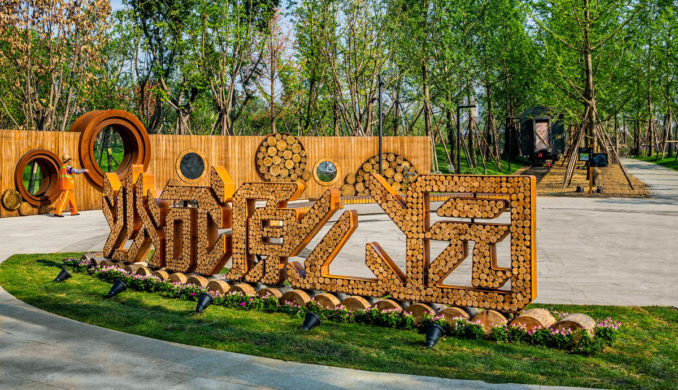
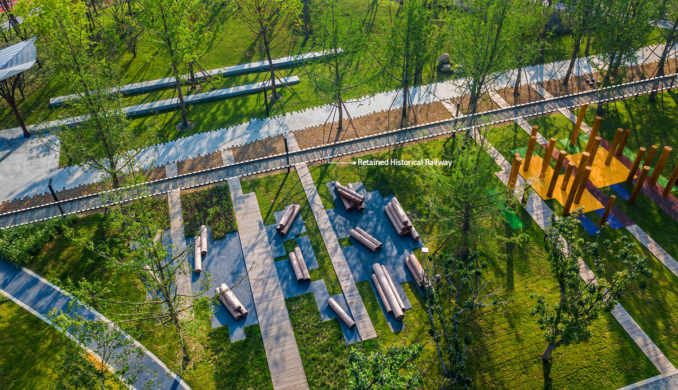
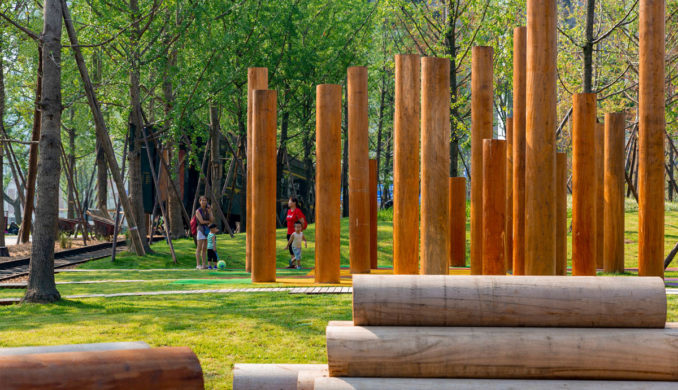
Retain Industrial Heritage
The design maximizes retention of the remaining railway, which used to transport wood, that connects wood culture nodes and serves to remember past transportation heritage.
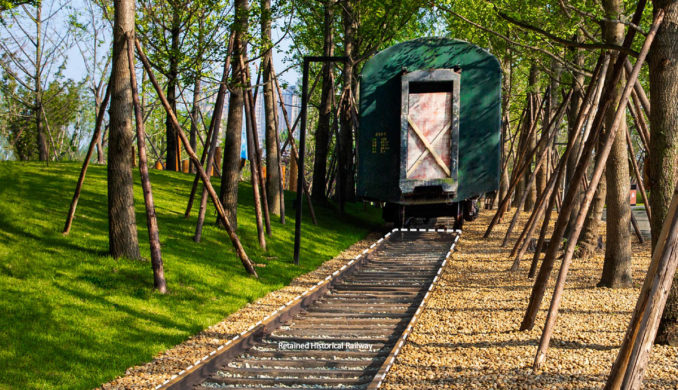
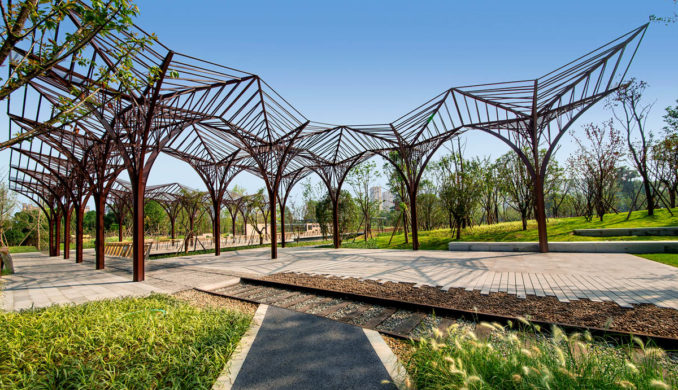
Functional Transformation of the Industrial Heritage in the New Era
Storage warehouses are re-interpreted as shade canopies for gathering space supporting neighboring residents, whilst preserving the site’s wood culture.
Ecosystem’s Protection and Optimization
In the aspect of water circulation: First, collecting, filtering and purifying rainwater by resilient facilities like bioswale, rain garden, ecological wetland, ecological stream and ecological lake. Second, water from the Sha River is diverted to connect the urban water system. Allowing water to enter the site, particularly during floods, which alleviates pressure on rivers and reinstates the site’s previous floodplain function.
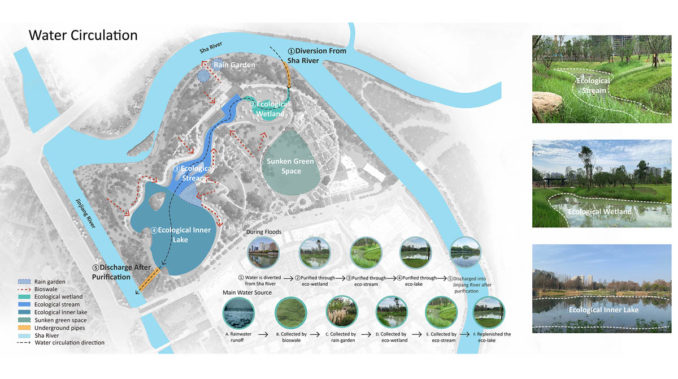
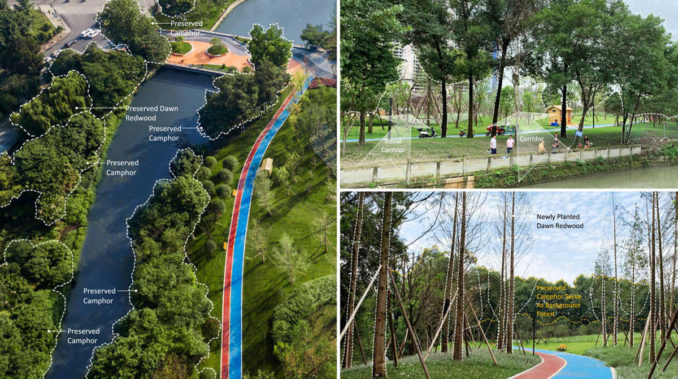
Besides, the project preserves the existing mature trees along the riverbank to create continuous waterfront green corridor, clearing the lower ground vegetation cover and planting native species for improving stability and diversity of plant communities as well as creating aesthetic scenery.
Creating Inclusive Urban Space
The park creates nature-based and human-friendly play spaces that accommodate multiple users and types of activities, which facilitates social justice.
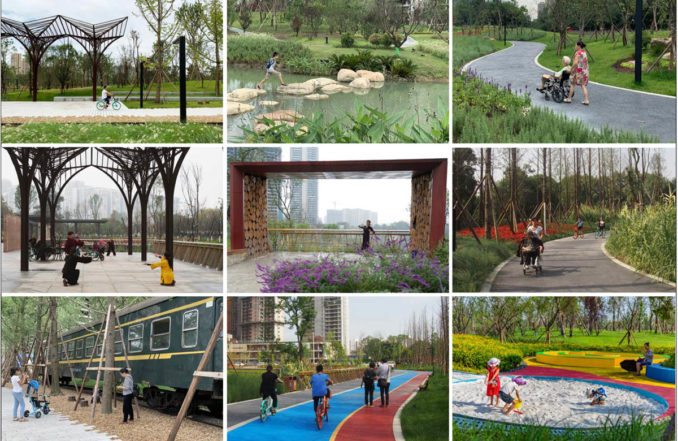
Conclusion
Infusing sustainability with lumber industry heritage, Shaheyuan Park project has transformed the lost space into a green space with a unique place spirit.
Shaheyuan Park
Design Firm: AECOM
Lead Designers: Tung Sheng Shen, Lee Parks, Chuiyong Fan, Hai Yu, Xiaodan Liu, Wei Yan, Jiaoni Yang
Designers: Xian Su, Jinren Peng, Yiling Wu, Dixuan Liu, Yajun Zheng
Construction Drawing Consultant Firm: AOBO
Client: PowerChina Real Estate Group Ltd. Southwest, Chengdu Golden Bull District Construction Investment Co., Ltd.


